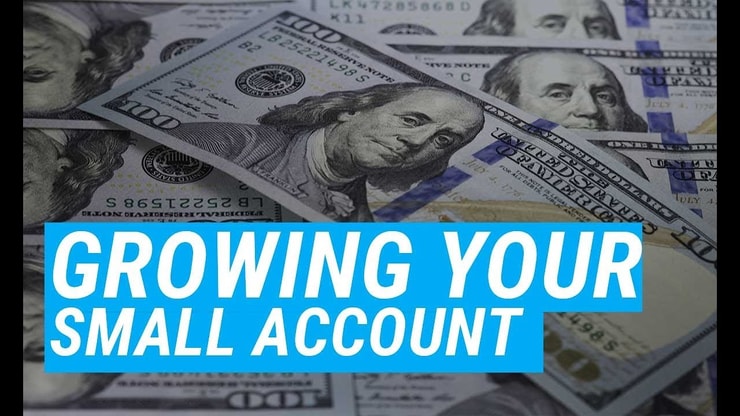Day trading is one of the most-hyped — yet misunderstood — trading styles. There’s a lot of bogus information out there and plenty of misconceptions about what it takes to be successful as a day trader.
I’ve been a consistently profitable day trader for over 15 years, and use my experience to teach the students in my Trading Challenge and more.
Based on the knowledge I’ve gained over my career, here are 11 day trading tips and strategies for the stock market.
Table of Contents
- 1 What is Day Trading?
- 2 Day Trading Success Stories
- 3 11 Day Trading Tips to Skyrocket Your Profits
- 3.1 1. Identify Entry Points
- 3.2 2. Don’t Hit and Run
- 3.3 3. Be Cautious with Selling Short
- 3.4 4. Limit Losses
- 3.5 5. Implement Mental Stops
- 3.6 6. Start Small
- 3.7 7. Set Aside Some Money to Fund Your Trading Account
- 3.8 8. Time Your Trades
- 3.9 9. Be Realistic About Profits
- 3.10 10. Stick To Your Plan
- 3.11 11. Remember That Knowledge is Key
- 4 What Else Do You Have to Keep in Mind?
- 5 The Bottom Line
What is Day Trading?
The term ‘day trading’ is often tossed around and used incorrectly, so let’s set the record straight on what it is — and what it isn’t.
Day trading refers to the purchase and sale of a stock within the same day. If a position is held overnight or longer, it’s not day trading.
Day trading isn’t exclusive to just one market, but it’s perhaps most commonly known as a method for trading in the stock market. Since I’m a day trader of penny stocks and that’s the focus of my teachings, in this article we’ll stick with day trading tips and strategies to succeed in the stock market.
Of course, day trading could involve buying and selling in other markets, such as the foreign exchange market (aka FOREX trading).
How Can You Profit From Day Trading?
As a day trader in the stock market, you’ll use various short-term trading methods, setups, and strategies to help you profit by capitalizing on the price fluctuations of stocks.
Can you profit from day trading? It depends on who you ask. Plenty of traders are quick to say you can’t — but these are usually people who have tried it and lost money because they didn’t bother to learn the basics before they started trading.
Risk in Day Trading
Is day trading risky? Yes, it can be. There are plenty of scammers out there who want to take advantage of you. Some brand themselves as teachers and make false promises, claiming they can teach you the “secrets” of the market and help make you a millionaire in a matter of weeks.
Others will try to take advantage of you as a new investor with pump-and-dump schemes. If you fall for the hype, you’ll likely end up as one of the infamous 90+ percent of traders who fail. But if you seek out a real trading education, you’ll learn to spot these scams a mile away.
But the risk inherent to day trading is part of what makes it possible to be profitable …
Since it carries a high risk level, many traders with large accounts or financial advisors tend to steer clear of day trading. They have the funds to take larger positions, so they can wait for longer plays to make profits. That’s why they scoff at day trading. Fine by me, because it’s less competition!
One of the big benefits of day trading is that it doesn’t require a lot of money to get started, so you can reap opportunities even if you have a small account. But you must learn how to mitigate risk.
To truly become a profitable day trader, it’s critical to learn the mechanics of the market, how to identify patterns, and to master short-term trading strategies that can deliver profits.
Day Trading Success Stories
I and many of my students are living proof that you can profit from day trading and maintain long-term success.
I’ve been trading since my teens, starting with an account of $12,415 of my bar mitzvah money. My parents gave me their blessing to trade with it, figuring I’d learn a hard lesson when I gambled it away. They were wrong.**
I applied myself, got obsessive about studying the market, and started identifying patterns for picking out good trades. While I’ve had ups and downs, I’ve been a consistently profitable trader for over 15 years.** I teach my students the tried-and-true methods that I’ve picked up over the years — not a get-rich-quick scheme.
However, just because it’s possible to be profitable as a day trader doesn’t mean it’s easy.
As a new day trader, especially when you’re just starting out, trading won’t be your primary source of income. While day trading can be learned and basics and classes are a huge help, time and experience are your biggest teachers.
Do you have what it takes to be a day trader? Here are some traits that I look for in potential students:
- A willingness to learn: If you think you know it all, or that you’ll be the one who’s exempt from studying, then you don’t have what it takes to become a profitable trader. To become successful, you must humble yourself and be willing to grow over time. You have to want it enough to apply yourself!
- Discipline: My best students — and the most profitable traders — are disciplined. You have to study hard and often because you understand that you need an in-depth knowledge of the market in order to profit.
- An edge: As a day trader, you must have an edge. This means developing your own unique style of finding setups that work for you. However, it’s still great to look at alerts and see what other traders are doing. By educating yourself, you’ll develop your own unique style. What do superstar traders like Tim Grittani and Stephen Dux have in common? They developed their own style over time. This gives them an edge.
- A plan: The best traders are extremely tactical and approach trades without emotion. A trading plan can be your greatest asset. It helps you determine when to enter and exit trades, and what to do in the worst-case scenario.
11 Day Trading Tips to Skyrocket Your Profits

Do you want to be one of the day traders who makes it? Here’s your to-do list.
1. Identify Entry Points
In the trading sphere, the entry point is the price at which you enter a trade. It isn’t as simple as looking at the price and saying “Oh, looks good.” There’s an art to successfully choosing an entry point — and it’s backed by your research-based trading strategy.
Here’s an example of how you might approach an entry point …
Say you’ve been following a stock but the price seems too high to buy right now based on historical data. However, you determine that if the stock’s price were to drop by a certain amount, that would be appropriate. This is your entry point.
But don’t stop there. You also need an exit strategy. This is the point at which you’ve determined that it’s a good time to get out of the trade profitably.
How can you monitor if a stock dips to your desired level? Set up a scanning tool using StocksToTrade to determine when the stock reaches the entry point. If and when it does, you’re ready to buy with greater confidence.
Don’t be afraid to push the “order” button!
Pulling the trigger on your trade can be a scary moment. But if you’ve done your research, made a trading plan, and determined entry and exit points, don’t overthink it.
When the stock meets your criteria, push the order button. You’ll never undoubtedly know whether a stock will perform how you’d like, but once you have a plan in place, you can make your move with greater confidence.
More Breaking News
- Quantum Leap or Time to Reconsider: SEALSQ Corp’s Dynamic Market Moves
- Carbon Revolution’s $25M Financing Pact: Path to Growth or Risky Bet?
- BigBear.ai’s Stellar Rise: Key Government Contracts and Financial Outcomes
2. Don’t Hit and Run
If you take the hit-and-run approach, you’re entering the market at its highs, and then exiting when it tapers off. But when it comes to day trading, this might not be the best approach.
3. Be Cautious with Selling Short
Short selling is a method you can use to profit when stocks are going down in value. It’s not illegal or unethical. Check out the Steady Trade podcast episode on legendary trader Jesse Livermore, and you’ll learn that this method has been in practice for over 100 years.
To sell short, you borrow shares from a broker, then sell them before buying them back, putting you in a negative position. If you shorted 500 shares, you’d see -500 (yes, negative) shares in your account. In an ideal world, the stock drops and you buy the shares back, netting the difference.
The easiest way to understand this: You’re still buying and you’re still selling, but you’re just doing a mirror-effect on how it’s traditionally done.
A caveat: In this method of trading, while the profits are virtually unlimited, so are the losses. I’ve used short selling with great success, but it requires a lot of caution.
For many, short selling isn’t the entry to trading, but something you work up to. Definitely try paper trading before diving into short selling as a day trader.
4. Limit Losses
This is my number-one rule above all else: Cut losses quickly. Just ask my students; I can be brutal when they break this rule. When a trade isn’t working, limit your losses and get out. Otherwise, the recovery is tough.
By determining your entry and exit points, you’re taking a proactive step to limit potential losses. You’re creating markers for yourself. When a stock’s price reaches your entry point, it’s like a green light. But if the price doesn’t perform as you’d like, you must have an exit strategy and stick with it.
You might lose some money, but don’t hold onto hope that things will turn around. They won’t. Trading should NEVER be emotional. Just suck it up and move on.
5. Implement Mental Stops
You determine mental stops in your mind. It’s a decision you make about when you’ll exit a trade or investment. If things start going south, you’ll trigger your mental stop and exit.
Having this exit strategy in place for any type of investment — whether day trading, swing trading, or another type of trading — can be the difference between mild and major losses.
Plus, once you make a resolution with yourself, you’re more likely to stick with it. This is a huge benefit if/when things get emotional during a trade’s progression. It helps you keep a level head.
6. Start Small
I’ve earned millions over the years, and most of my wins are small amounts that have accumulated over time. Because I’m a big transparency advocate, I post all of my trades on Profit.ly.
I constantly tell my students to focus on small but reliable profits. They don’t all need to be home runs. Smaller hits can add up to much bigger gains over time. Don’t take huge positions, especially when you’re just starting out.
Only trade with money you can afford to lose!
If a trade goes sour, you don’t want to lose your house — so don’t trade with money you can’t afford to lose!
Some say that when it comes to trading, you shouldn’t risk more than 1 percent of your total account on a single trade. This will keep losses small, but may also hinder your gains.
Depending on how small your account is, 1 percent could be very small, so in this case, you could consider raising the limit to 10 or 20 percent.
7. Set Aside Some Money to Fund Your Trading Account
Be sure that your trading account is just that. Don’t trade with your life savings!
You can find all sorts of thoughts online (including my own) about how much money you need to start day trading. While there are some factors like brokerage firms requiring minimums, ultimately it’s less about what you start with and more about what you do with your funds.
Regardless of whether you start out with $200, $500, $1,000 or $5,000 or even $50,000, it matters far less compared to how much knowledge you amass in the months and years you spend trading.
No matter how much you start with, you probably won’t make much in the beginning until you learn all the rules and repeatedly practice good trading habits.
8. Time Your Trades

Just like there are better times of the week and of the day to buy airline tickets online, there are prime times for you to buy and sell. Per a highly informative post on the StocksToTrade blog, here are some ideal times to buy or sell stocks:
- The best time to buy stocks? Opening hours. The hour after the market opens and the trading session begins is a highly volatile time. It’s during this time that news since the last market bell is incorporated and buyers and sellers are reacting. For established traders, this first 15–60 minutes of the trading day is the best time to buy or sell stocks. Until you’re up to speed, the volatility at these times can prove challenging to brand-new traders.
- Best day to buy stocks? Monday. According to StocksToTrade, “The Monday Effect is a well-documented tendency for stocks to drop on Mondays. This is a good time to buy on the dip.”
- Best day to sell stocks? Friday. Contrary to the Monday effect, the end of the week is the best day to unload or to take short positions. A Friday preceding a three-day weekend can be particularly good for taking advantage of these phenomena.
Of course, these aren’t 100 percent set-in-stone rules. As the StocksToTrade post concludes, “The only par for the course is that the first and final hours of a trading session are almost always the busiest, and therefore tend to offer the most opportunities for day traders.”
9. Be Realistic About Profits
If you expect to make a fortune within weeks or months of embarking on a day trading career, you’ve got another thing coming.
Yes, there are superstar traders who start with small accounts and grow them exponentially within just a few years, but they’re the exception rather than the rule. Don’t focus on getting rich; focus on gaining experience and expertise. The more knowledge you gain, the more likely you’ll reap profits over time.
As you can see on Profit.ly, my average profit is just over $1,800. That’s not a world-changing amount. However, when added together over weeks, months, and years, my profits exceed $4 million.
10. Stick To Your Plan
Many of the tips I’ve offered here involve doing research, studying the market, and being tactical in your approach to every trade. But none of it will do you any good if you don’t stick to your plan.
Trading is as much a mental game as it is a money game. The actual trading part can take seconds, but choosing the right trade is where the real value in the process happens. By carefully crafting a research-backed trading plan and sticking to mental stops and planned entry/exit points, you’ll be far ahead of many wannabe day traders.
11. Remember That Knowledge is Key
Knowledge and self-sufficiency are critical to your success in this game. Penny stocks are volatile, so you must learn how to identify them and craft a plan on how to rapidly trade them, then execute.
It can be difficult and confusing at first. But trust me, with enough studying and putting your knowledge into action, you’ll begin to grow more confident. You’ll never be perfect. The stock market is not an exact science. But practice and continued study will make it easier over time.
Keep yourself updated with the Trading Challenge
To stay informed and sharp, my students receive live trading and Q&A webinars every week. You get to see me and my top students in action, even if the entire webinar is spent ruling trades out because there aren’t any good options.
You can learn from great plays and bad ones, too. If you can’t make the webinars, they’re all archived. I have hundreds of webinars from trading challenge students that can help grow your education and stay up to date.
What Else Do You Have to Keep in Mind?
Here are some other things to remember while performing your fundamental research as a day trader.
Candlestick Patterns
Many new day traders prefer line charts because they’re clean, easy to read, and seem familiar. However, candlestick charts can reveal many patterns and hold value for traders.
Instead of a single data point per interval, candlestick charts have four data points per interval: the high, open, close, and low.
The wicks represent the high and the low, with the bars’ ends forming the open and close. The color of the bar determines whether the top one is the open or the close. Red universally means down, but positive bars can be represented by green, blue, clear, or black, depending on the chart. Overall, there’s more information contained in the candlestick chart.
When it comes to trading penny stocks, liquidity is even more important than volatility. Liquidity essentially refers to how easy it is to trade shares of a stock.
One of the keys to day trading is the ability to move in and out of a position quickly, so you should always be on the lookout for stocks that are extremely liquid in relation to the capital you’re trading with.
Consider a stock that is trading a million shares a day. If you buy or sell 1,000 shares, you won’t influence the price in a big way, so you can get in and out of the trade easily.
But if you buy 100,000 shares, you have a much bigger influence on the price and might not be able to exit quite as quickly or easily. Because of the size of your position, it will be harder to find buyers or sellers to unload your shares when you need to.
Some of my biggest losses have resulted from taking positions that are too large, so I try to stick with smaller positions to limit the risk.
A stock’s volatility is a measure of the price variance it experiences over time. By figuring out the volatility, you can gain a better understanding of how the stock’s price has historically fluctuated. It’s an important part of your fundamental research and can give you a better understanding of how the stock might perform in the future.
Volatility can be measured in different ways, but one of the standard methods is figuring out the standard deviation.
According to Investopedia, which offers a tutorial for figuring out the standard deviation, “In finance, standard deviation is a statistical measurement; when applied to the annual rate of return of an investment, it sheds light on the historical volatility of that investment.”
Volume is an indicator I care about when trading penny stocks because it helps determine the strength of a trend. The volume of shares is a way of looking at the number of shares of a stock that are bought and sold during a specific amount of time.
Each transaction counts as one unit of measure. So, for example, if 100 shares of a stock are bought and/or sold throughout the course of a day, the volume for that day would be 100.
The Bottom Line
Becoming a successful day trader is possible for anyone willing to put in the effort — but most people are just too lazy to put in the hard work.
Day trading is fast paced. Unless you have a strong knowledge base about market mechanics, it’s easy to get in over your head. My Trading Challenge is the perfect way to educate yourself, establish good study habits, and develop solid researching skills. These are the not-so-secret keys to success.
Are you ready to start day trading?





Leave a reply